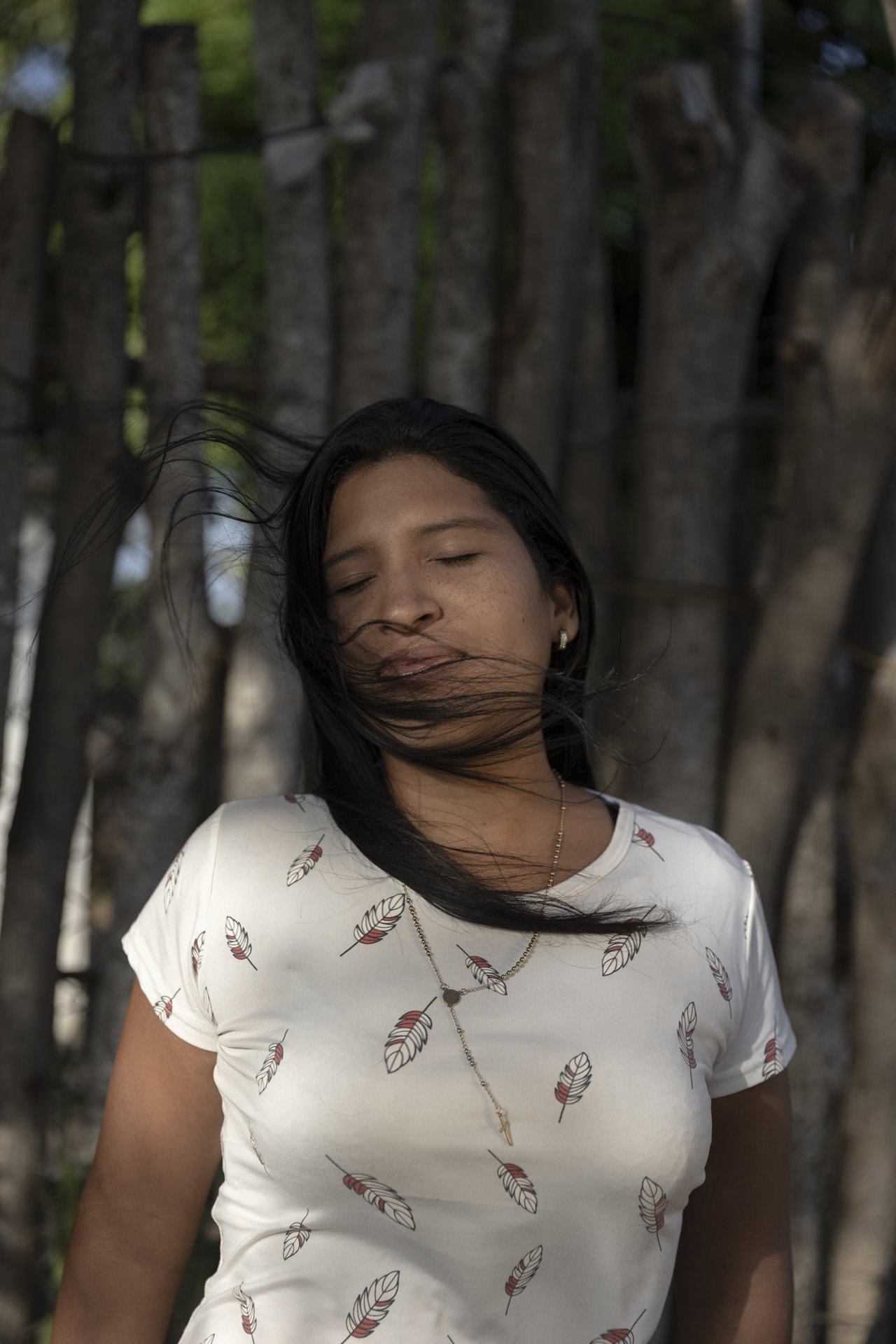Karelis Rivas (29) poses for a portrait in her home where she lives with her father, in Campo Alegría, an oil community in Zulia State, Venezuela. They still live in a house belonging to national oil company PDVSA. Karelis’ father was one of the 18,000 oil workers fired after strikes in 2002, even though he did not participate. Once a symbol of prosperity, Campo Alegría now experiences lack of basic services and decaying infrastructure.
Millions of Venezuelans have left their country to live abroad, driven by economic collapse, political unrest, high unemployment, and extreme social inequality.
A member of that diaspora since she left in 2016, the photographer returns to her birthplace to search for traces of the Venezuela of her memory. Her project combines images of migration and past political violence with those of present-day Venezuela – of the decay, and of the resilience of people living within it.
Around the turn of the millennium, oil-rich Venezuela was prosperous, but its fortunes declined following plummeting oil prices, later economic mismanagement, and political instability. Unemployment, which stood at 7.4 percent in 2015, rose to 35.6 percent by 2018, and 51.5 percent by 2022, according to the International Monetary Fund. Hyperinflation reached 686 percent in 2021, and though that figure is receding, HumVenezuela reports that some 4.4 million people were in dire need of drinking water from 2021 to 2022, and 1.3 million people in need of basic sanitation services.
In addition, a deficit of teachers, poor transport, and dilapidated schools have led to a collapse of the education system. According to a study conducted by the Universidad Católica Andrés Bello (UCAB) fewer than two out of three 3- to 24-year-olds were enrolled in education for the 2021/2022 academic year.
Young people, especially, began to leave the country as a result of these conditions. At least 7.2 million Venezuelans are now registered as living abroad, according to the UNHCR, but the numbers of migrants without regular status is likely to make that figure much higher – and the average age of migrants is increasing. According to the UCAB study, in 2017, the majority were between 15 and 29 years old; in 2022 most people leaving were aged between 30 and 49.
After years of contraction, the oil-rich nation’s economy began to clearly grow again in 2022. Poverty is decreasing, and even though inflation is still high, hyperinflation and food shortages have largely ended. Yet, at the same time, the gap between rich and poor remains wide. According to research by the National Poll of Living Conditions (ENCOVI), the richest 10 percent of Venezuela’s population earns 70 times more than its poorest 10 percent, and in 2022 the income of 81.5 percent of households remained below the poverty line.

